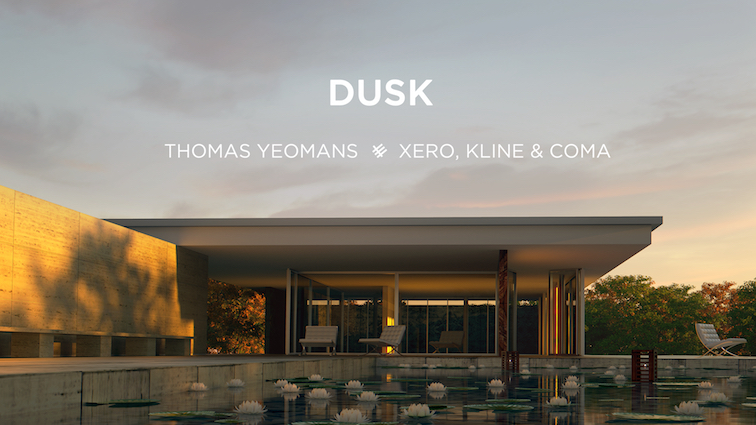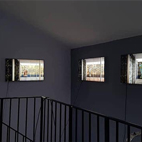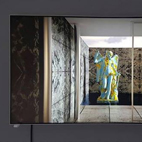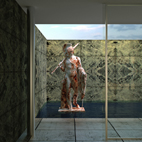
Thomas Yeomans
Dusk
Exhibition open:
23.3.19 – 14.04.19
Sat. – Sun. 12:00 – 18:00
Private view:
Thursday March 21st, 18:00 – 20:00
The carefully placed slabs of expensive stone, glass and steel that make up Mies Van Der Rohe’s Barcelona pavilion are part interior and part exterior- promising fluidity within a rigidly defined grid.
In the corner of one of two water basins sits a Neo-Classical sculpture by Georg Kolbe called ‘Dawn’. It is a body that looks like it is pranging out within the confines of this pristine marble stage.

Kolbe was an artist who received great patronage from the Nazi Party. Fascists celebrated his rendering of the human form as athletic, ideal, and supreme. At the height of his success, Kolbe sculpted a bust of Franco that was given as a gift to Hitler. Kolbe’s work fits perfectly within the fascist strategy of appropriating Classical paradigms as propaganda for white supremacy.
Whilst Kolbe was enjoying success as a Fascist artist, Mies Van Der Rohe gave up hopes of being commissioned by the Nazi party and moved to America where his designs became icons of Western Modernist architecture.
For me, the basin of water in which ‘Dawn’ stands, marks a meeting point where the false promises of antiquity and modernity meet. Both propose ideals that are precise, perfect and beautiful- but leave us as ugly, imposing blemishes sprawled across the glossy surfaces.
In the CGI images I have rendered for this exhibition, icons of antiquity replace ‘Dawn’ within the pavilion.
Their bodies have been re-sculpted to loosen signifiers of gender such as chests, crotches and hips. Corroding surfaces of rust, chipped paint, and oil are mapped across their skin. They are no longer heroic archetypes but flawed individuals. They are dirty and colourful. They are diseased and beautiful. They are in the final stages of becoming - lit by a permanently setting sun.
These are not pictures of a new Dawn. These pictures are of a new Dusk.
Thomas Yeomans( b.1989 Coventry) lives and works in London. Working predominantly in video, CGI and 3D animation, Yeomans’ research observes networked, online communities and responds to the way in which digital culture impacts the analogue world.
Recent works have responded to the rise of online, extreme-right youth movements and the recent lurch to nationalist white supremacy in the West. Historically, the far right’s appropriation of occultism, magick, conspiracy and antiquity are well-documented symptoms of a fascist creep and recent online iterations are a troubling indicator of how the right currently has a placeholder on radicality.
Yeomans adopts visual languages such as advertising campaigns; religious, political and sloganistic texts; signs and symbols, both corporate and everyman- to embed counter-narratives within images that are recognizable and mainstream.



